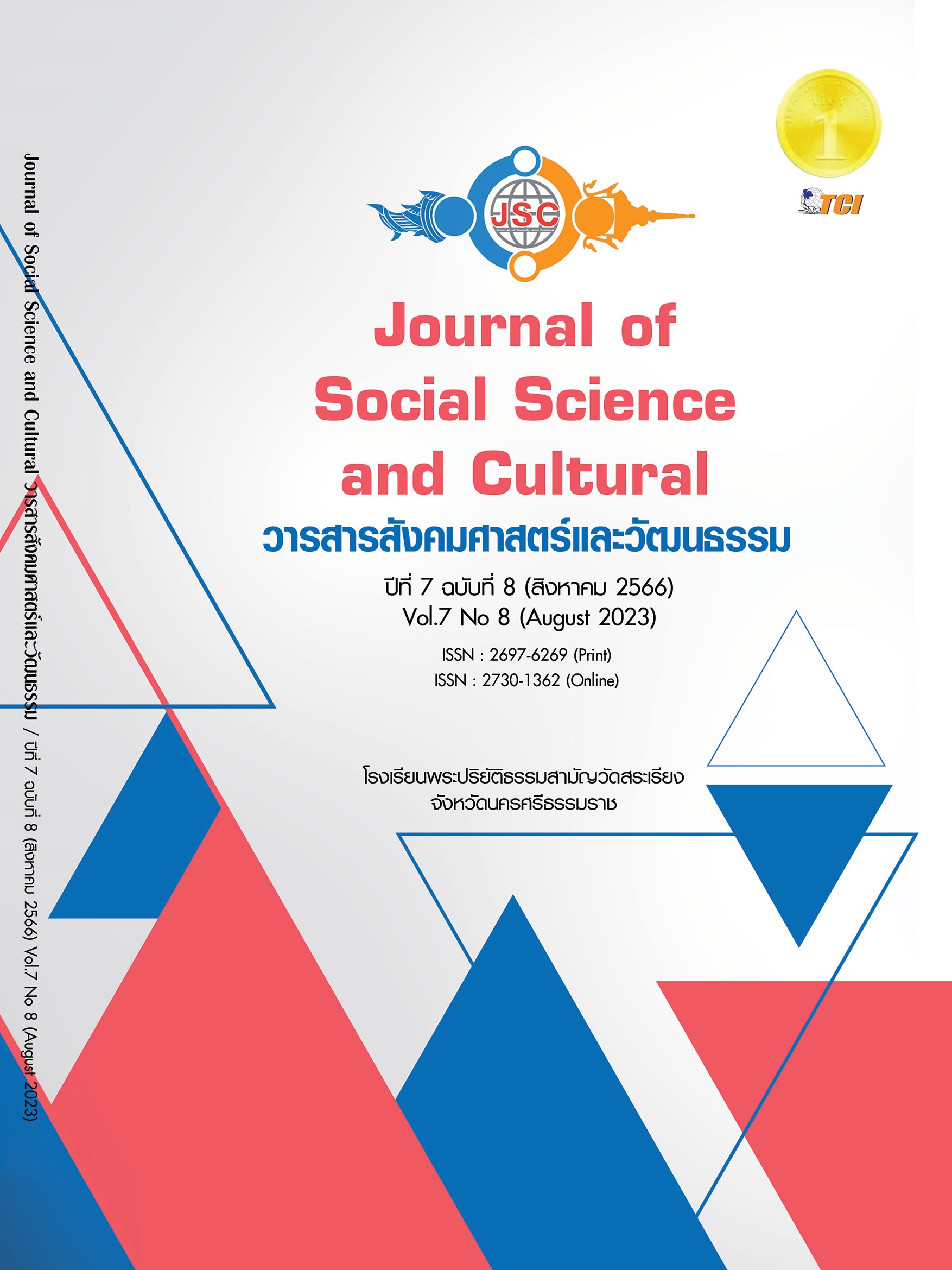THE POTENTIAL OF THE ELDERLY IN THE DEVELOPMENT OF TOURIST ATTRACTIONS IN BO-SUPHAN COMMUNITY SONG-PHI-NONG DISTRICT SUPHANBURI PROVINCE
Main Article Content
Abstract
This study, the objectives were to 1) study the context of Bo-Suphan community, Song-Phi Nong district, Suphanburi province. That can be developed and upgraded to be a local tourist attraction and 2) the potential of the elderly in developing tourist attractions in the Bo-Suphan community, Song-Phi-Nong district, Suphanburi province. The quantitative sampling is the population quantity that selects representatives of potential elderly, who are ready to jointly develop tourism areas in 4 communities out of 18 communities. It was found that there were 681 people and 50 people were randomly sampled in the area, divided according to the proportion of the population in the area. It was found that from the context of Bo-Suphan community. That has outstanding characteristics of the community, it was used to determine the Bo-Suphan community tourism route, as follows: Point 1 Ban-Nong-Ling weaving community and Mon community. Point 2 Wat-Thap-Kradan community and the legend of the Queen Luk-Thung-Phum-Puang-Duang-Chan song story, Point 3 Organic agricultural products community and Point 4 community on the route of King Rama VI's royal visit. However, the guidelines that want to develop the potential of the elderly to support tourist attractions in the community. Encouraging the elderly to create jobs distribution of income from tourist attractions management readiness, public relations for tourism in the community as a morning-evening return trip in terms of facilities, including travel accommodation and restaurants Including various activities arising from the context of the community reflecting the identity according to the way of life and creative works that are unique and distinctive in the community to enjoy knowledge and basic wisdom local culture on the basis of responsibility Awareness of the preservation of cultural heritage and environmental values by the local community contributes to tourism management.
Article Details
References
กระทรวงการท่องเที่ยวและกีฬา. (2566). สถิตินักท่องเที่ยวชาวต่างชาติที่เดินทางเข้าประเทศไทย. เรียกใช้เมื่อ 20 กรกฎาคม 2566 จาก https://www.mots.go.th/more_news_new.php?cid=411
ณฐอัมรัตน์ อินทบำรุง และชมภูนุช หุ่นนาค. (2564). แนวทางการพัฒนาการท่องเที่ยวอย่างยั่งยืนของเกาะสมุย. Journal of Administrative and Management Innovation, 9(2), 82-96.
ณัฏฐพัชร มณีโรจน์. (2560). การจัดการการท่องเที่ยวโดยชุมชน. วารสารวิชาการการท่องเที่ยวนานาชาติ, 13(2), 25-46.
ธิดารัตน์ ตันนิรันดร์. (2557). ความคิดของนักท่องเที่ยวต่อการท่องเที่ยวต่อการพัฒนาการท่องเที่ยวตลาดคลองสวน 100 ปี. SDU Res. J, 10(2), 91-103.
พัฒนมาศ วงศ์พัฒนศิริ. (2566). การท่องเที่ยวโดยชุมชนอย่างยั่งยืน. เรียกใช้เมื่อ 20 กรกฎาคม 2566 จาก https://www.nectec.or.th/ace2019/wp-content/uploads/2019/09/20190909_SS02_ Patthamas.pdf
เมษ์ธาวิน พลโยธี และคณะ. (2565). แนวทางการพัฒนาการท่องเที่ยวโดยชุมชนอย่างยั่งยืน กรณีศึกษา ชุมชนไทดำ บ้านนาป่าหนาด อำเภอเชียงคาน จังหวัดเลย. วารสารการท่องเที่ยวนานาชาติไทย, 18(1), 1-25.
ลัดดาวัลย์ สำราญ และคณะ. (2564). ทัศนคติชุมชนต่อการทำงานของผู้สูงอายุ กรณีศึกษาตำบลบ่อสุพรรณ อำเภอสองพี่น้อง จังหวัดสุพรรณบุรี. วารสาร มจร สังคมศาสตร์ปริทรรศน์, 11(3), 196-210.
วรกันยา พรหมพลและอัจฉรา วัฒนภิญโญ. (2561). ความพร้อมของชุมชนกับการพัฒนาพื้นที่เพื่อการท่องเที่ยวเชิงนิเวศ ของวนอุทยานน้ำตกผาหลวง จังหวัดอุบลราชธานี. Veridian E-Journal, Silpakorn University ฉบับภาษาไทย สาขามนุษยศาสตร์ สังคมศาสตร์ และศิลปะ, 11(2), 2623-2639.
ศูนย์วิเคราะห์เศรษฐกิจ. (2566). บทวิเคราะห์การสนับสนุนการท่องเที่ยวเมืองรองปี 2566. เรียกใช้เมื่อ 19 กรกฎาคม 2566 จาก https://www.ttbbank.com/th/newsroom/detail/ttb-points-out-that-thai-tourism-thailand-2023.
อัจฉริยาพร คันธมาลาเจริญ. (2564). การพัฒนาศักยภาพการท่องเที่ยวในแนวทางการท่องเที่ยว 4.0 กรณีศึกษาพื้นที่ตำบลกี้ดช้าง อำเภอแม่แตง จังหวัดเชียงใหม่. ใน วิทยานิพนธ์การวางแผนภาคและเมืองมหาบัณฑิต สาขาวิชาการวางผังเมืองและสภาพแวดล้อม. มหาวิทยาลัยแม่โจ้.


